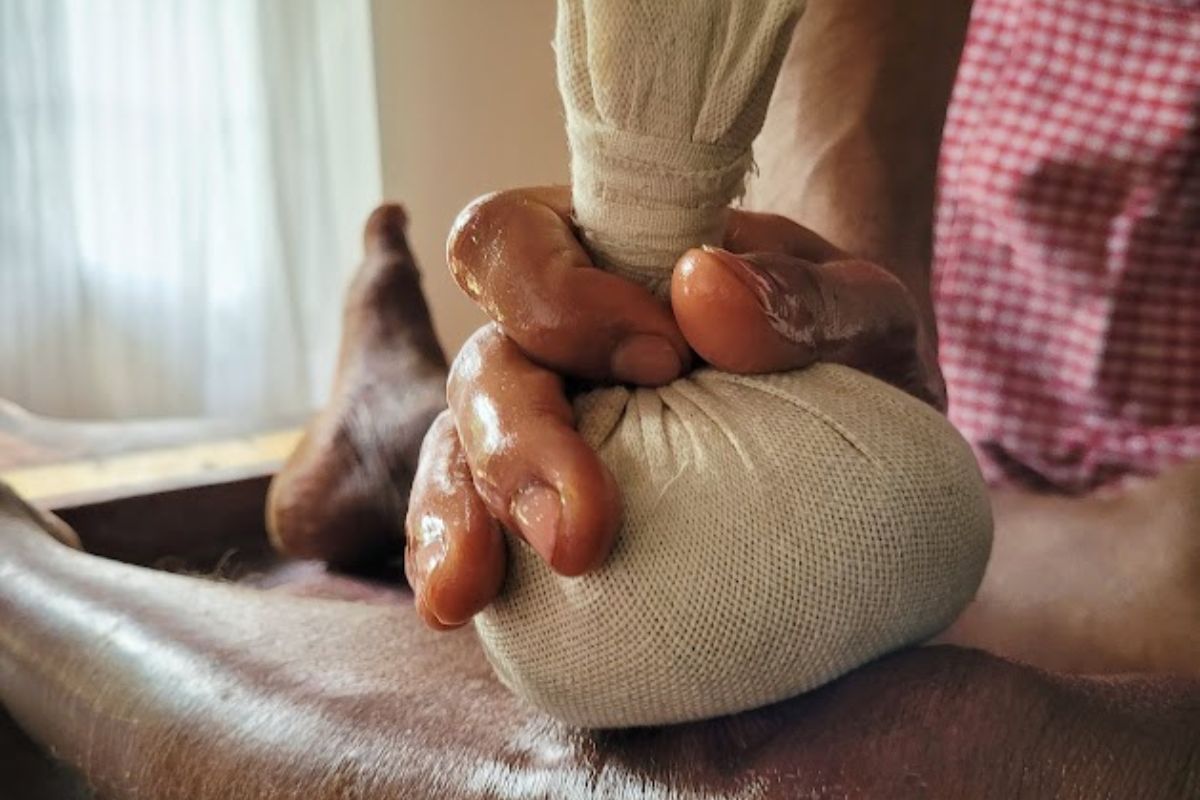Home > Specialised Care > Arthritis > Vata Rakta
Vata Rakta (Rheumatoid Arthritis)
Vatarakta is an illness where both Vata and Rakta are afflicted by distinct causative factors. Aggravated Vata is blocked by vitiated Rakta, in turn leading to further aggravation of Vata. Thus aggravated Vata vitiates the whole Rakta producing complex effects leading to the condition Vatarakta. Small joints of feet and hands are mainly affected by this.

Overview
When viewed under the lens of contemporary science it can be inferred that vata rakta is a broad term that includes various autoimmune connective tissue disorders like SLE, Rheumatoid arthritis to metabolic disorders like Gouty arthritis.
Rheumatoid arthritis is a chronic inflammatory disorder that can affect your joints.Unlike the wear-and-tear damage of osteoarthritis, rheumatoid arthritis affects the lining of your joints, causing a painful swelling that can eventually result in bone erosion and joint deformity.
Systemic lupus erythematosus (SLE), is an autoimmune disease in which the immune system attacks its own tissues, causing widespread inflammation and tissue damage in the affected organs. It can affect the joints, skin, brain, lungs, kidneys, and blood vessels.
Gout is a common form of inflammatory arthritis that is very painful. It usually affects one joint at a time (often the big toe joint). There are times when symptoms get worse, known as flares, and times when there are no symptoms, known as remission. Repeated bouts of gout can lead to gouty arthritis, a worsening form of arthritis.
Psoriatic arthritis is a type of inflammatory arthritis that occurs in some patients with psoriasis. This particular arthritis can affect any joint in the body, and symptoms vary from person to person. Research has shown that persistent inflammation from psoriatic arthritis can lead to joint damage.
Symptoms
1. UttanaVatarakta: When it is limited to twak and mamsa. it is considered as Uttana(Superficial) vata rakta.
- Itching
- Burning sensation
- Pain
- Dilatation of the vessels
- Pricking pain
- Throbbing sensation
- Contraction
- Cyanosis of the skin
- Reddish coloration of skin
- Splitting type of pain
- Heaviness
- Numbness
2. Gambhira Vatarakta :When deeper dhatus like asthi, majja etc are affected. it is considered as Gambheera or Avagada (Deeper) Vatarakta.
- Swelling, which is fixed
- Deep pain
- Black discoloration
- Coppery discoloration of skin
- Burning sensation
- Pricking sensation
- Throbbing sensation
- Suppuration
According to Acharya Charaka, vitiated Vata and Rakta affect the joints of hands, feet, fingers and all other joints slowly. Hands and feet are the sites of first attack & gradually the whole body comes under the grip of the disease.
Signs and symptoms of rheumatoid arthritis may include:
- Tender, warm, swollen joints
- Joint stiffness that is usually worse in the mornings and after inactivity.
- Fatigue, fever and loss of appetite
Early rheumatoid arthritis tends to affect your smaller joints first — particularly the joints that attach your fingers to your hands and your toes to your feet. As the disease progresses, symptoms often spread to the wrists, knees, ankles, elbows, hips and shoulders. In most cases, symptoms occur in the same joints on both sides of your body.
Types
A. According to dosha:
- Vata Pradhana Vatarakta
- Pitta Pradhana Vatarakta
- Kapha Pradhana Vatarakta
- Rakta Pradhana Vatarakta
- Dvandaja Vatarakta
- Sannipataja Vatarakta
B. According to site:
- Uttana Vatarakta
- Gambhira Vatarakta
Causes
Dietary causes:
- Excess intake of amla(sour), lavana(salty), katu(pungent), Kshara(alkaline), ushna(hot), snigdha(unctuous).
- Beans, black gram, oil cake, horse gram, radish.
- Flesh of the animals.
- Incompatible food.
- Eating before the complete digestion of the previous meal.
- Irregular food habits.
- Excess alcohol intake.
Activity causes:
- Sleeping during day time especially after meals.
- Keeping late hours or not sleeping during nights.
- Improper fasting/ dieting methods.
- Excessive swimming.
- Excess coitus.
- Walking long distances.
- Suppression of natural urges.
- Lack of physical exercise.
According to body constitution:
- Obese person.
- Delicate person who indulge in irregular diet and sedentary habits.
Complications/Upadravas
Upadravas are the signs and symptoms which occur during the course of disease and after the disease. Vatarakta is among the disorders which can persist in a patient for a long time. There is progressive involvement of other Dhatus with the passage of time and if proper treatment is not given, these complications have local as well as systemic manifestations in future.
The complications are :
- Insomnia
- Tissue-necrosis
- Anorexia
- Limping
- Dyspnoea
- Erysipelas
- Thirst
- Suppuration
- Heaviness in head
- Pricking pain
- Fever
- Disfigurement of digits
- Confusion
- Eruption
- Muscle wasting
- Tremors
- Hiccough
- Discolouration
- Delirium
- Contractures
- Mental fatigue
- Tumours
- Affliction of vital parts
- Diminution of Prana
Risk Factors
Factors that may increase your risk of rheumatoid arthritis include:
- Sex: Women are more likely than men to develop rheumatoid arthritis.
- Age: Rheumatoid arthritis can occur at any age, but it most commonly begins in middle age.
- Family history: If a member of your family has rheumatoid arthritis, you may have an increased risk of the disease.
- Smoking: Cigarette smoking increases your risk of developing rheumatoid arthritis, particularly if you have a genetic predisposition for developing the disease. Smoking also appears to be associated with greater disease severity.
- Excess weight: People who are overweight appear to be at a somewhat higher risk of developing rheumatoid arthritis
Investigations
- Blood tests:
People with rheumatoid arthritis often have an elevated erythrocyte sedimentation rate (ESR, also known as sed rate) or C-reactive protein (CRP) level, which may indicate the presence of an inflammatory process in the body. Other common blood tests look for rheumatoid factor and anti-cyclic citrullinated peptide (anti-CCP) antibodies.
- Imaging tests:
Your doctor may recommend X-rays to help track the progression of rheumatoid arthritis in your joints over time. MRI and ultrasound tests can help your doctor judge the severity of the disease in your body.
Diagnosis & Treatment
When you consult an Ayurveda physician with symptoms of rheumatoid arthritis, they will examine your case in detail. They will inquire about any risk factors in your life and will take a stock of your life to know if you have been knowingly or unknowingly doing any of the causative factors. They will also examine your affected joint to understand more about the degree of progress of arthritis before coming to a decision about the management.
Any treatment for arthritis should aim at preserving the functionality of the joints. This is achieved by preventing further destruction of the joint, keeping the inflammation and the associated symptoms like pain and stiffness under control and to the minimum, to achieve the maximal range of joint mobility and to stop the development of deformities and complications.

Panchakarma therapies (Purificatory methods): Purificatory methods have been given due importance in the management of Vatarakta. Following line of management has been given in Charaka Samhita and successive classics:
- Snehana Karma: Snehana or oleation therapy is given to the patient of Vatarakta prior to Shodhana as well as Shamana Chikitsa in Vatarakta.Snehana is also used externally in the form of Abhyanga.
- Virechana Karma: Therapuetic purgation is advised in the treatment line of Vatarakta.
- Vasti: It has been mentioned that Vasti Karma is the best treatment for patients suffering from Vatarakta. Vasti Karma includes both Asthapana and Anuvasana vasti in the form of Karma, Kala and Yoga vasti. Vasti Chikitsa is advised after giving Virechana & considered as best for Vata Shamana.
- Raktamokshana Karma: Rakta Margavarana is the predominant pathology of Vatarakta and this leads to the accumulation of morbid Rakta. Hence Raktamokshana is considered the main treatment of Vatarakta. Raktamokshan may be done by Shringa, Jalouka, Suchi, Alabu, Prachhana and Siramokshana methods.
Pacifying therapies: Pacifying therapies helps to bring about homeostasis, keeping Tridosha at Sama Avastha. Samhitas have given a number of formulations to keep Samyaavastha of Tridosha and to alleviate signs & symptoms of Vatarakta.
External therapies: External therapies are essential in patients suffering from Vatarakta. Charaka Samhita has stressed to use local applications in Uttana Vatarakta. Local applications should be used in the form of Lepa, Parisheka and Abhyanga.
- Lepa- Warm application of medicated paste over affected joints.
- Parisheka – Pouring of medicated liquids or oils.
- Abhyanga – Abhyanga over the affected part is planned according to the dominance of the involved Dosha. Warm oil processed with Vatahara drugs is used for Abhyanga.
Diet: Pathya for Vatarakta patients : Cereals like old barley, wheat, green leafy vegetables like Kakamachi(Solanum nigrum), Masura(Lens esculanta) Mudga(Psoralea radiatus), Shatavari(Asparagus racemosus) sizzled with Ghee and meat soup, Milk of cow, buffalo and goat.
Apathya for Vatarakta patients :Vatarakta patients should avoid intake of Katu (pungent), Ushna (hot) Amla and Lavana Rasa Pradhan food and Abhisyandi foods like Black gram , Horse gram, flat beans, garden pea, Flesh of birds and aquatic animals, Curd, sugarcane, Radish, alcohol, Fermented drink, Sesame.
Lifestyle: Vatarakta patients should avoid sleep during day time, exposure to heat or sunlight, Excessive exercise and coitus.
Ayurveda offers a holistic, historically rooted, reportedly safe, alternative treatment for Rheumatoid Arthritis.
At Saranya, we believe in the old school application of Ayurveda wisdom with a modern approach rooted in evidence based practise. The medicines and therapies are fixed only after individual consultation through listening, understanding the need and analyzing the root cause. We incorporate different diagnostic methodologies in identifying the root cause of pain and plan unique customized treatment strategies to eliminate the causes.
We believe in restoring the quality of life by relieving the hardships and pain of those who suffer.
References: Ashtanga Hridaya, Charaka Samhita, Sushrutha Samhita.
Personalised Ayurvedic interventions have demonstrated clinically significant improvement in rheumatoid arthritis on a par with allopathy treatment with the added advantage of lesser side-effects, according to a study. The first-ever study of a traditional medical system sponsored by WHO and was conducted by the University of Washington, Seattle, and the University of Los Angeles, California, with funding from the National Institutes of Health in the U.S. and the Arya Vaidya Pharmacy (AVP), Coimbatore.Tamil Nadu, India, from 1977 to 1984. This unblinded, longitudinal study entitled, “The WHO/ICMR Study of the Efficacy of Ayurvedic Treatment for Rheumatoid Arthritis,” enrolled 290 patients with RA over a 7-year period, and was conducted at the Ayurvedic Trust in Coimbatore, India. The study was published in the Journal of Clinical Rheumatology in June 2011 can be accessed through PubMed of the United States National Library of Medicine at the National Institutes of Health.This analysis of the first cohort of patients discharged from the study clearly indicates that they improved considerably as a result of Ayurvedic treatment. There was improvement (statistically significant) in the patients’ condition from admission to discharge.
